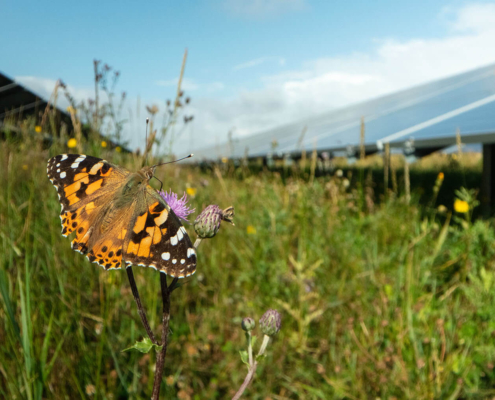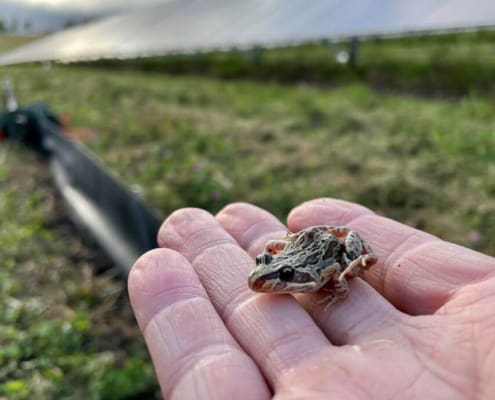PV Farms and Biodiversity
A new home for skylarks and endangered lizards – PV farms as a refuge for biodiversity. This could be a great idea, in fact.
PV farms planned with ecological awareness can go some way to restoring natural environments that have been depleted and polluted. And perhaps in the future, they will serve as planned conservation areas for endangered animal and plant species. For example, as a habitat for bumble bees providing reliable pollination for fruit, vegetables and other crops grown in their surroundings, or as a haven of tranquility for stressed nature.
Then the systems would not be in competition with fields, woods and meadows, but rather would be a kind of conservation area themselves.
When asked whether he considers PV farms in service of nature to be a crazy idea or instead crucial to the future, Yannik Mießeler, project manager at F&S Solar said, “I think that is already the reality. The existing systems are already making a positive contribution. And it will become even more significant in the future. So, not an outlandish idea.”
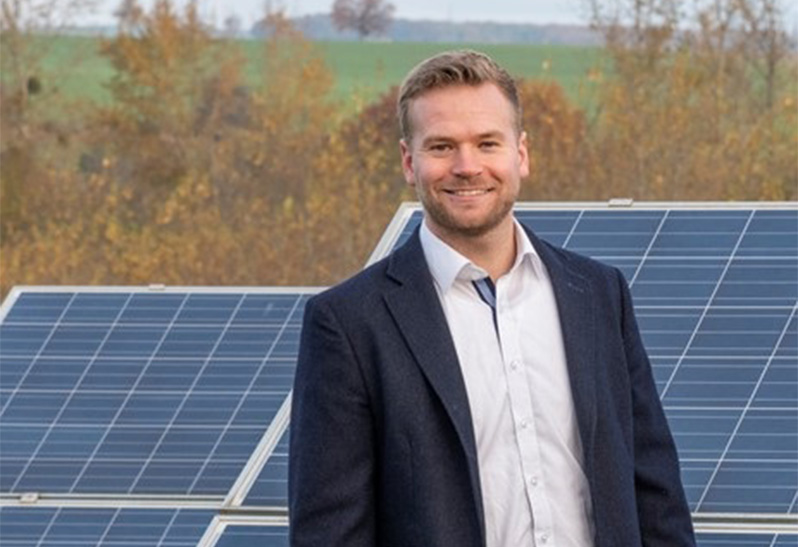 F&S; solar concept GmbH
F&S; solar concept GmbH“If I can make a meaningful contribution to generating renewable energy as well as to simply achieving a bit more biodiversity, not doing so would be a wasted opportunity.” – Yannik Mießeler, F&S; Solar
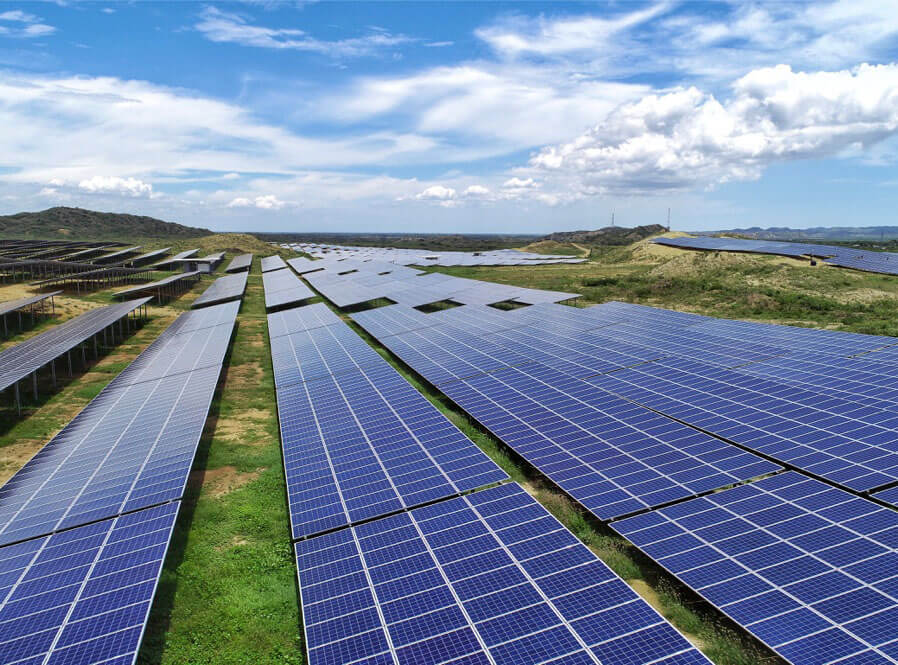
The best part is that it’s so simple!
“A PV farm brings many positives with it that can improve biodiversity,” said Mießeler. “Especially if the area was previously used for agriculture or was grassland. The first positive aspect is that it is not paved. A PV farm is fenced in, which protects animals from predators and traffic. The modules provide protection from direct sunlight. In addition, customized seed mixtures can be sown for insects. All of this is extremely easy to implement, so why pass up this opportunity?”
His employer F&S Solar, which is an SMA partner company, made a special effort to consider biodiversity during the planning and construction of a PV farm in the Dominican Republic some years ago and is therefore familiar with the long-term effects.
In 2014, F&S Solar began planning a PV farm in the Monte Cristi province in the northwest of the country after conducting market research. “At that time, the environmental aspects of PV systems here in Germany were a side issue, but in the Dominican Republic, they were no issue whatsoever. There were no conditions imposed by the authorities,” said Mießeler.
But F&S Solar was clear from the outset that it would not simply put up a PV farm. “It was the first project for us in this part of the world, so it was important to us to take time and fully think through how it could benefit flora, fauna and society.”
F&S Solar commissioned an expert to carry out an analysis of the plant and animal species living on the 2 km2 site. “This analysis alone was 500 pages long and was a massive inventory. It meant we were aware of the status quo and knew what was worthy of protection,” said Mießeler.
At the same time, there was the question of funding. This is where three development banks – German, Dutch and Belgian – came into play with their own requirements. The resulting package of criteria contained 20 biodiversity measures alone. “The biggest was that we replanted 10,600 plants worthy of protection during the construction phase as a compensatory measure. We hired people from the area to do that.”
F&S Solar freshly planted eight native plant species on the site itself. These included an orchid species that was threatened with extinction and only found on the island of Hispaniola (the island in the Antilles on which the Dominican Republic is located). “We thought, in that case, that we would use the space available to us here to slowly revive the species,” explained Mießeler.
They have largely succeeded in doing so. “With the replanted plants, we have a survival rate of 85 to 95 percent depending on the species, and every year we have replacements planted for any that have died, so that they survive and gradually propagate on their own.” The company is still maintaining a cooperation to that end with the botanical gardens in Santo Domingo and Santiago in the Dominican Republic.
“And there were effects that we had not anticipated,” reported Mießeler. “To begin with, our focus was on protecting the species and on ways to use the compensation areas productively. But in the meantime, it has become apparent that very interesting things also happen under the modules. The fact is that birds hatch there while seeking the protection of the modules. Those are truly wonderful side effects that were not planned to happen like that.”
Asked which role SMA and SMA products play in the Caribbean project, Mießeler answered: “Monte Cristi and the Dominican Republic in general is a region exposed to extreme environmental influences, including hurricanes. The materials had to be proved to withstand extreme conditions. SMA was able to deliver all wind classifications and provide especially robust materials. We have been working with SMA from the very beginning. The well-established partnership was of course beneficial because it was about entering a new market. Knowing each other for a long time makes it a whole lot simpler.
A solar haven in France
“Temperatures in France of about 40°C and hardly any precipitation since spring – flora and fauna suffered a lot. But we have seen PV systems that were like a haven for certain species. They survived underneath the solar panels, where the vegetation was not fully burned by exposure to the sun.” As Sales Director at SMA France, Vincent Mathély supported the construction of a PV farm in the department of Loire in central France that is rated as particularly environmentally friendly. Although the area would have yielded more, the installed power is limited to 2 megawatts. The system was intended to blend in with the landscape – Le-Pré is located in a rural area dotted with small villages and is surrounded by hills and forests. And its impact on the environment as well as animal and plant species needed to be as minimal as possible.
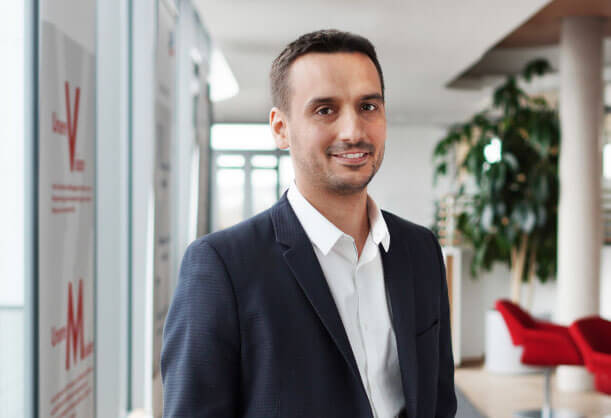
“[W]e have seen PV systems that were like a haven for certain species. They survived underneath the solar panels, where the vegetation was not fully burned by exposure to the sun.” Vincent Mathély, Sales Director SMA France
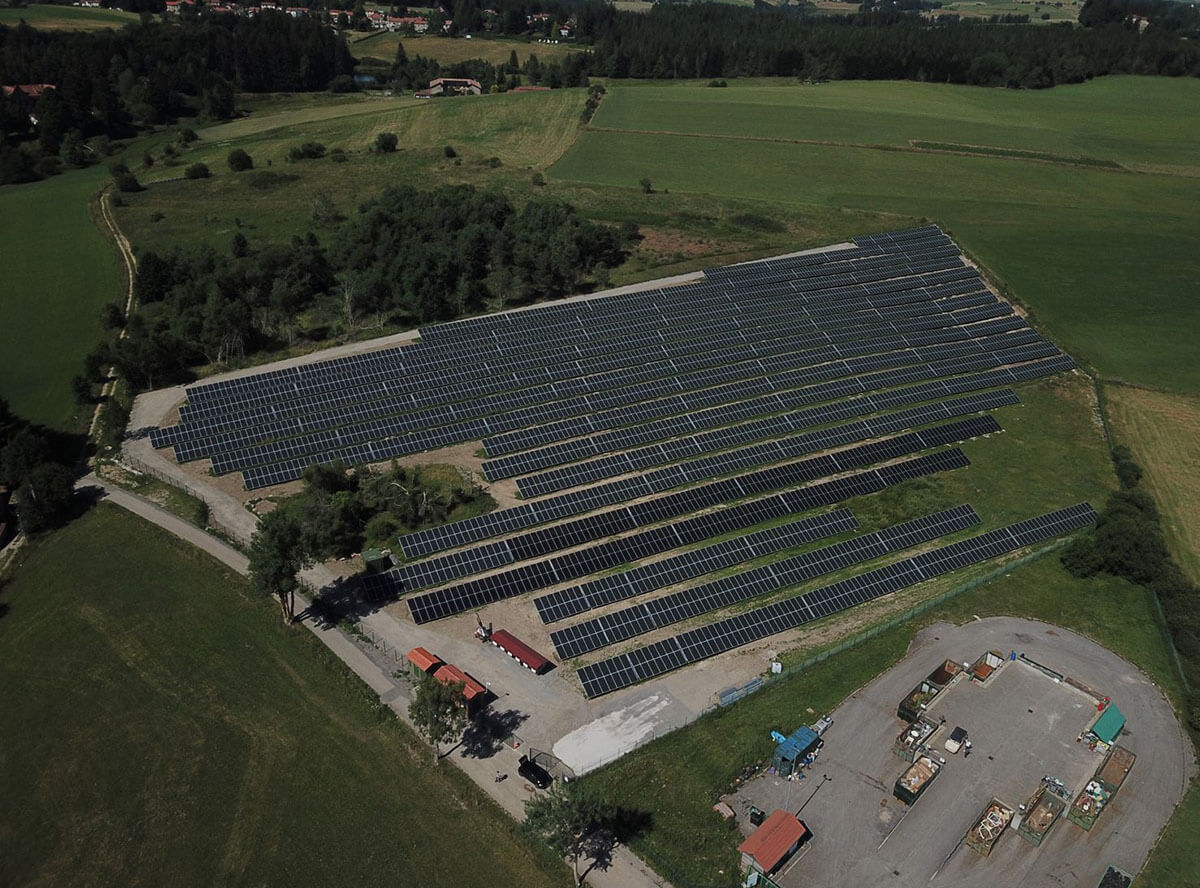
This was a conscious decision on the part of SIEL-Territoire d’énergie Loire, a committee that on behalf of local governments became the public building contractor of the PV systems. “The calls for tenders from the French government give priority to project submissions that involve brownfield sites,” explained Mathély. “These include former garbage dumps, quarries, or industrial sites with contaminated soil. These locations are identified with the aid of government databases and are favored for the development of PV systems.” Le-Prés was a material store for the construction of the adjacent national highway that had already lain empty for quite some time.
“One key element in the application process is the public presentation of an environmental impact study by a third party,” said Mathély. One of four areas to be examined as part of this is the natural environment: habitats and the identification of species, insects, mammals, birds, reptiles, and existing conservation areas. The impacts are assessed using specific methods, repeated species inventories at different times of the year, site visits and 3D project simulations. Various measures were derived from the knowledge gained.
Today the Le-Prés PV farm includes 1,800 m2 of vegetation as a natural habitat for species common to the local area, while hedges were planted on the north and east sides. As further measures for implementing the results of the study, Mathély stated that “700 m2 is specially dedicated to a type of moorland herb, the round-leaved wintergreen. There is a pool for amphibian reproduction and a shelter for reptiles – and, of course, the order to monitor the works from an ecological point of view. Following the works, greenery was planted on all the paths and the main electronics for the inverters are concentrated close to the site entrance so that the system is surrounded by nature.”
Mathély is also motivated by the prospect of a cleaner world for future generations. “Our energy generation system requirements are therefore changing worldwide at high speed. The acceptance and support of the public is essential for tackling this massive challenge. We have to lead by example.”
The relationship between industrial agriculture, PV farms and nature conservation is also becoming clear in the context of agrivoltaics. You can find out more about this in SONNENALLEE and in the Sunny Blog.
A hot topic of research
Scientists worldwide are exploring on behalf of companies and at universities which natural processes are taking place underneath the solar panels.
Two examples:
Better Energy, Blangslev (DK)
Commissioned by solar service provider Better Energy, researchers found seven key aspects to promoting biodiversity at a PV farm. Observations at a pilot installation in Blangslev, Denmark – previously conventionally farmed land – indicate that biodiversity stands to increase by around 25 percent in 5 years and up to 60 percent in 30 years when compared with conditions prior to construction of a PV farm.
Photo: Better Energy
Foto: E. Goldberg


